- Pothead
- Posts
- the DEA skips annual Marijuana report
the DEA skips annual Marijuana report
and a short history on the OG weed brownie queen.
Hey buds…
Happy new year! Got any big goals this 2025?
Here are ours:
✔ Find and share Pothead with 100,000 cannabis-curious heads and hearts around the world.
✔ Be more like Brownie Mary.
✔ Keep you informed, entertained, and inspired with the best cannabis stories, news, and culture with every single puff.
Okay, now your turn (the inbox is wide open)!


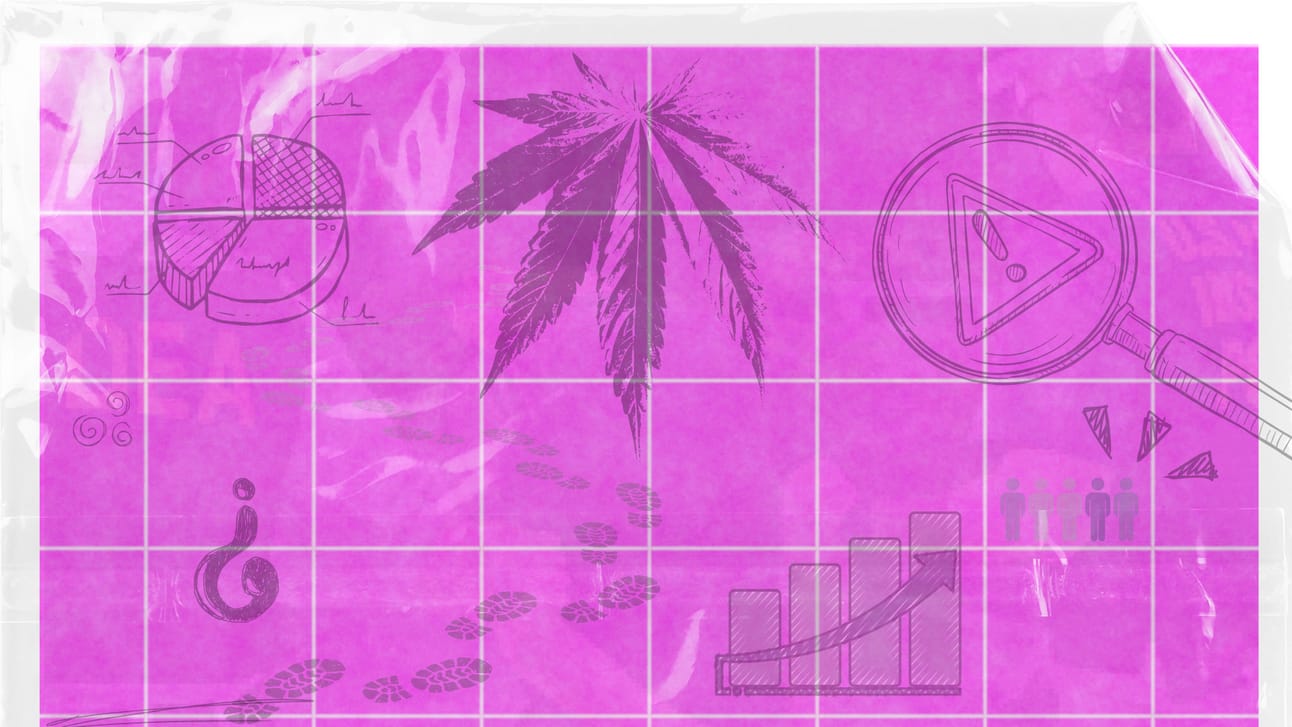
Where’s The DEA Weed Report?
Another year has come and gone, and with it $3.3 billion has flowed into the DEA’s budget…
Yet their annual report on marijuana seizures and arrests is nowhere to be found.
Ironically, the DEA’s own 2024 Budget Performance Summary claims they are “transforming [their] ability to leverage data to make operational decisions, organize priorities, and leave a positive impact on local communities.”
So where is the data?
👉 Every year, the DEA shares stats on how many cannabis plants they’ve seized and how many arrests they’ve made through their Domestic Cannabis Eradication/Suppression Program.
👉The most recent published report (all the way back in May 2023), showed a spike in plant seizures but a drop in arrests.
This year? Crickets.
NORML's Deputy Director, Paul Armentano, criticized the DEA's lack of transparency, stating:
🚨 At a time when voters and their elected officials nationwide are re-evaluating state & federal marijuana policies, it is inconceivable that government agencies are unwilling to provide data on the estimated costs & scope of federal marijuana prohibition
— NORML (@NORML)
4:00 PM • Dec 30, 2024
Meanwhile, taxpayers keep footing the bill for the global war on drugs, and the DEA is gearing up for another year with a request of $3,769,921,000 for FY 2025.
In today’s world, data is everything. It drives decisions, shapes policies, and keeps people in power accountable.
At the end of the day, no data means no accountability. And without accountability, justice remains out of reach.
Data Data Data:


As of Jan. 1, Kentucky’s medical weed program is live, but registering means forfeiting the right to own, buy or sell guns.
Here’s what it’s like to intern for NORML if you’re interested.
Bigger joint in Texas? Maybe soon. A new bill is proposed to legalize possession of weed and other THC products in homes.
Wiz Khalifa calls Kevin Durant and Matt Barnes his favorite pothead athletes & sport leagues continue to ease up their tolerance for the green.
Kicking off 2025, California will now allow cannabis lounges to serve food and beverages, giving you a true Amsterdam-style experience.
Missouri marijuana regulators are looking out for the little guys, proposing new rules to protect microbusinesses, aiming to give smaller operations a fair shot in the cutthroat market. You can submit your feedback on the draft rules before Jan 6.


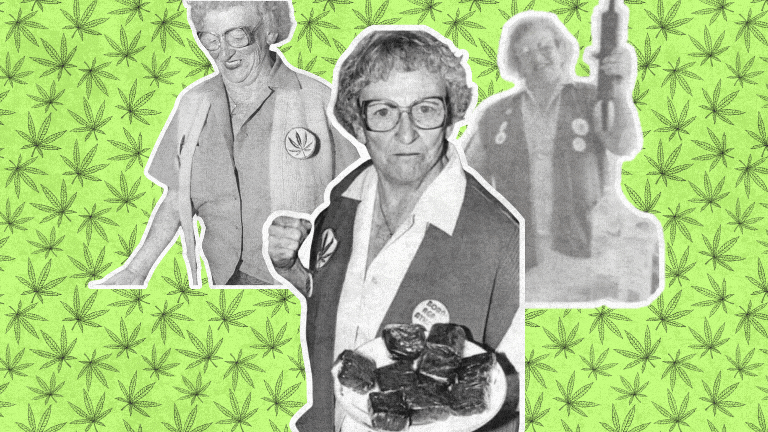
Who Is Brownie Mary?
Who Is Brownie Mary?
When you think of the Medical Marijuana movement, the face of a 65-year-old lady handing out weed brownies might not be the first thing that comes to mind… but it should.
Mary Jane Rathbun (yes, that’s her real name), was born 1922, in Chicago and grew up in Minneapolis.
After moving out at 13, she followed a long road of social activism fighting for rights of miners to unionize in Wisconsin and abortion rights for women in Minneapolis which eventually led her to San Francisco.
Her first arrest came in 1981.
She was making weed brownies at her home and selling them, advertising them in bulletin boards as “magically delicious” brownies.
After police raided her home and seized over 18 pounds of cannabis she was sentenced to 500 hours of community service, which she used to involve herself in the Shanti Project.
But Mary didn’t stop when her hours were up. She continued working with the Shanti Project and volunteering at San Francisco General Hospital, where she witnessed the devastating effects of the AIDS epidemic firsthand. Patients suffering from nausea, wasting syndrome, and severe pain found relief in her cannabis brownies—medicine that helped them eat, manage symptoms, and regain some quality of life.
It was then that Mary stopped baking for profit and started baking with purpose. Her brownies became a lifeline for the patients she cared for, and her work began to reshape the conversation around cannabis as medicine.
Her second arrest came when she was delivering a batch of brownies to a cancer patient undergoing chemotherapy. The same cop who was involved in both arrests, had been arrested for shooting off his gun in the driveway of his girlfriend’s apartment while drunk and naked...
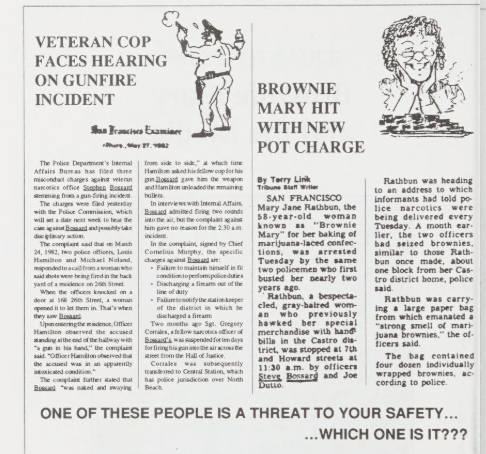
The arrest of the cop who arrested Brownie Mary (left) and Brownie Mary’s arrest (right) in ‘Brownie Mary’s Marijuana Cookbook and Dennis Peron’s Recipe for Social Change’
Mary continued making her iconic brownies - baking nearly 600 a day at the height of the HIV/AIDS crisis.
Her third arrest in 1992 made headlines worldwide, and she was acquitted on the grounds of medical necessity—a huge win that showed her actions were more about helping people than breaking the law.
Teaming up with activist Dennis Peron, Mary helped start the San Francisco Cannabis Buyers Club, the first public cannabis dispensary in the U.S. Their work led to big wins like Proposition P in 1991, which decriminalized medical cannabis in San Francisco, and Proposition 215 in 1996, which made California the first state to legalize medical marijuana.
She was unshakable in her belief that cannabis was medicine and that people deserved access to it, no matter the legal risks.
“If the narcs think I’m gonna stop baking brownies for my kids with AIDS, they can go fuck themselves in Macy’s window”.


Since we’re talking weed brownies, we figured you might get the munchies…
Here’s what’s been tempting us lately:
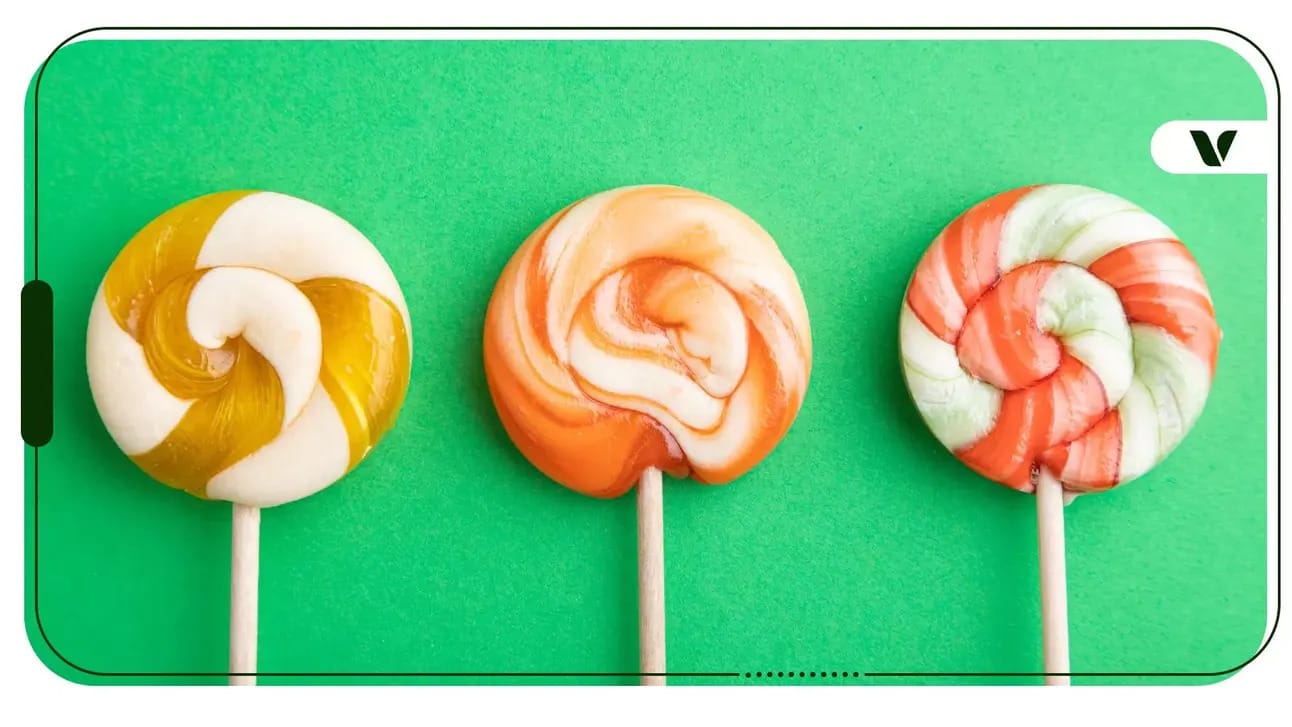
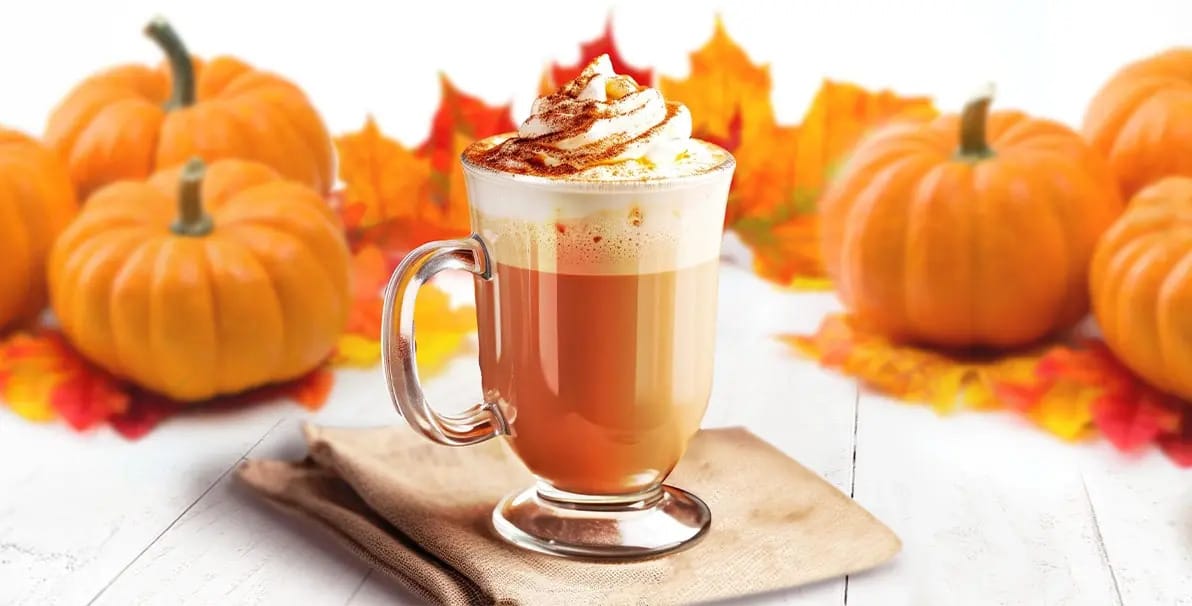


That’s it for this week’s puff!
Pass it on to a friend and help grow our little circle.
Got anything you wanna add, suggest, or vibe on? Just hit reply to this email and we’ll listen to anything you have to rant about (pinky promise)!
Catch you next week.
– Pothead



Reply